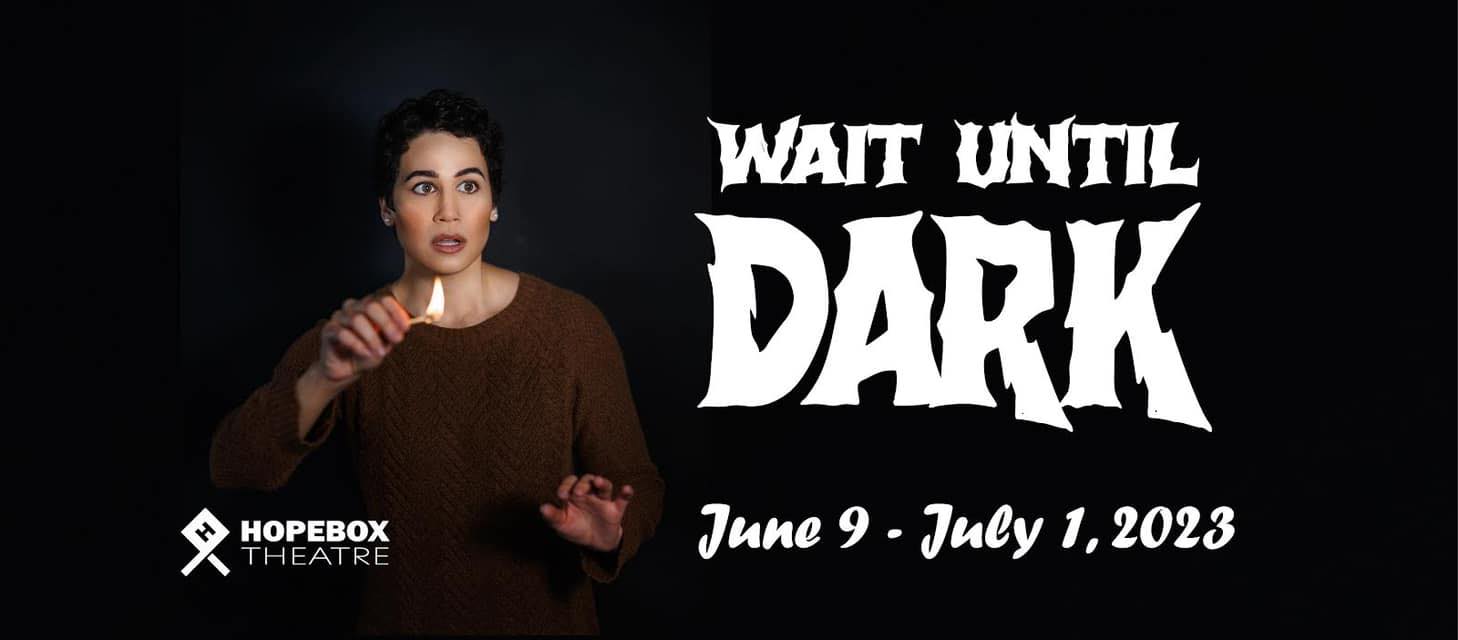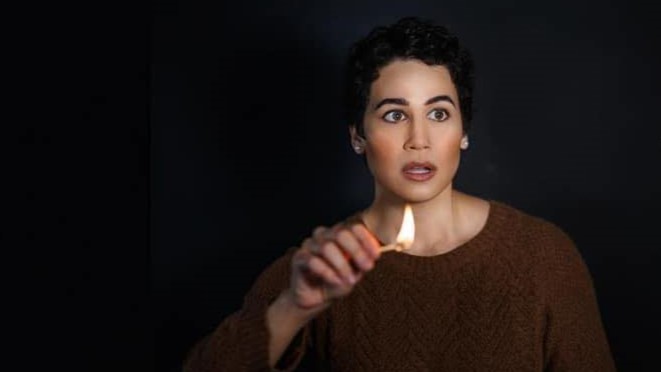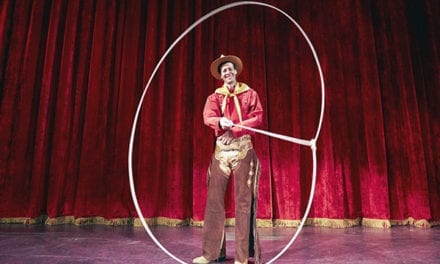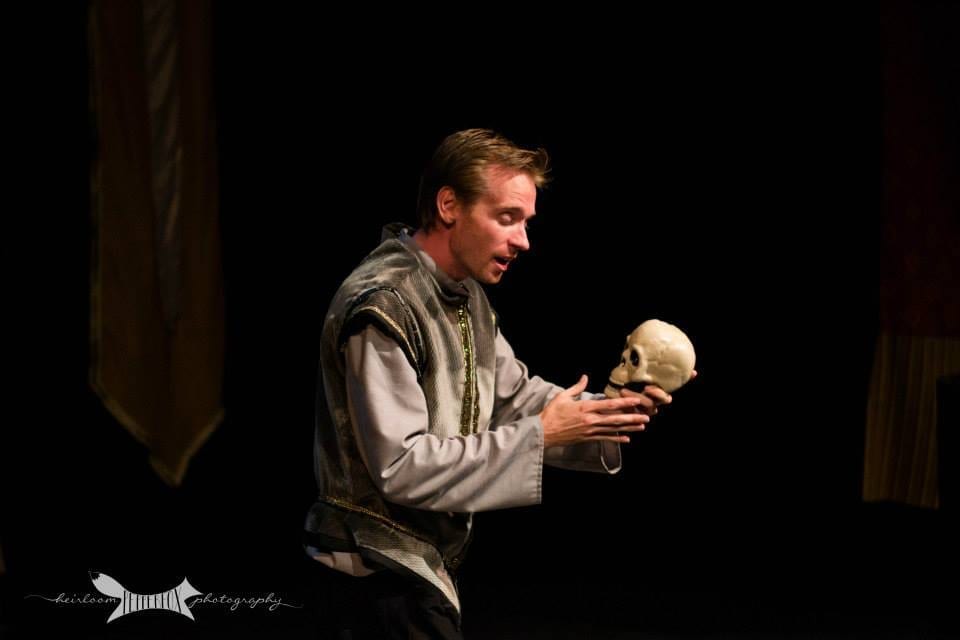KAYSVILLE — There is an unassuming, quiet domesticity awaiting audiences at the Hopebox Theatre, with an open stage set with a kitchen, living, and office area. The company’s current production is Wait Until Dark (written by Frederick Knott), and that ideal domestic setting is about to be upended in a thrilling battle of wits between blind housewife Susy Hendrix and three conmen. The conclusion of this play left me at the edge of my seat in anxious anticipation of what would happen when the lights turned back on. Co-directors Sadie Day and Adam West lead an excellent production that is faithful to the script and engages in the dramatic tension created by the elements of the production and the performances of the cast. As a fan of mysteries and television crime shows, I was engaged and very entertained by this dramatic thriller.

Show closes July 1, 2023.
Wait Until Dark introduces the audience to Susy Hendrix (played by Jillian Joy), who is adapting to being blinded due to an accident and is newly married to Sam Hendrix (played by Ethan Hoffman). Sam was given a doll, which he brought home and then lost. Unbeknownst to him, the doll was filled with illicit drugs. The doll is now sought by ruthless criminal Harry Roat (played by Spencer Mack) and two conmen, Mike Tolman (played by Craig Hovroka) and Sergeant Carlino (played by Austin Boonchan). These criminals hope to deceive Susy into finding the doll in her home, but they underestimate Susy’s abilities to discern the truth of the matter. Despite her loss of sight, Susy navigates her way to outwit the plans of the conmen and Roat with the help of young neighbor Gloria (played by Vivie Jensen).
The first moment anticipation began to build was when Susy entered and is revealed to be blind. Roat instructs the conmen, already present in her home, to hide in plain sight and stay perfectly still. This initial tense moment of the show beautifully sets the tone for this drama while Susy enters the set, cane in hand, and moves about the stage while a haunting piano motif plays. Joy is impressive in moving to physically establish Susy’s blindness while also indicating an awareness that something is off in her home.
Joy gives a spectacular performance in a role that demands physical adaptations in sight, in addition to communicating all the normal performance needs from an actor. Joy was captivating in each scene, as she interacted with all the other actors. Joy proved Susy was an equal match to uncovering the conmen’s lies. Joy both portrayed the vulnerabilities of blindness and the ability to overcome that limitation with intelligence.
The script is excellent at building tension in the search for the doll and Susy’s growing awareness of the situation, and the production adds elements that further engage the audience. The haunting piano theme was part of an original soundtrack by Skyler M Day, and as it recurred throughout the production added further intensity to the key scenes in the show. As the theme recurred it added to the dialogue of the script as the deceptions and subterfuge are revealed.
Knott’s script is very good and contains many explicit references within the dialogue to the technical needs of the production. Lightning designer Derek Raynor excelled at creating realistic lighting and, together with the staging of the performers, used that lighting to create effective shadows and strategic illumination. The finale of the show relies on the thrilling device of completely blacking out all light, and it is surreal to sit in a theatre with no light as the threat of a criminal looms. When there is light, for example from lightning outside the window at key moments, it strategically adds more intensity to the production.
The intimacy of the Hopebox Theatre places the audience right on the edge of the show. Set designer Curtis Dalton accurately recreated a quaint 1960s home, and the set functions efficiently throughout the production as the performers search through cupboards, filing cabinets, the fridge, and even a nook under the stairs. Every part of the set appeared to be used to further the plot of the show, likewise for the props included throughout the production by Kelsey Porter, such as a rotary phone, food in the fridge, and matches. The only issue I noted during this production was an initial lag at the show’s start that was quite long following the initial announcements to the audience where nothing was happening but the musical motif. It felt more like a delay than an intentional design decision that had me questioning when the show would begin or if there was a problem.
The Hopebox Theatre is unique in its mission to bring hope to families battling cancer through the performing arts. A portion of the ticket proceeds and all donations are paid directly to a person battling cancer (Dyanne Arbuckle, for this production). Though the lights in Wait Until Dark go out, the hope for this mission shines brightly. Hopebox’s unique mission and a gripping production make Wait Until Dark an entertaining and inspiring experience.





